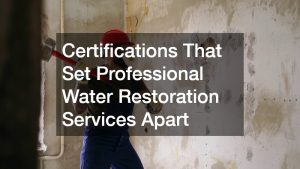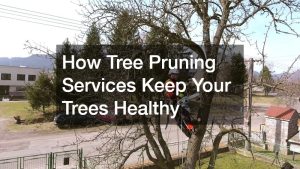
10 Essential Home Repairs After Buying Cheap Fixer Uppers
Purchasing a cheap fixer upper can be both exciting and intimidating. For many buyers, these homes represent a chance to own property at a lower upfront cost and customize it into a dream space. Others see fixer uppers as opportunities for investment—buy low, improve wisely, and sell high. But while the potential for savings and value appreciation is strong, the reality is that these properties often require extensive repairs to become safe, livable, and aesthetically pleasing.
What makes cheap fixer uppers so appealing is their flexibility. You can prioritize certain repairs, tackle projects gradually, and ultimately transform a run-down property into something special. However, the challenge lies in knowing which repairs are absolutely essential. Without a clear strategy, you may find yourself spending far more money than expected, or worse, overlooking critical safety issues.
This article highlights 10 essential home repairs every buyer of a cheap fixer upper should consider. From structural concerns like roofing and foundations to functional upgrades such as plumbing, HVAC, and electrical systems, addressing these areas ensures the property is both safe and valuable. We’ll also look at cosmetic and comfort-oriented improvements such as flooring, kitchens, and windows, which not only improve daily living but also significantly increase resale value.
Whether you’re an investor aiming to flip a property or a homeowner eager to settle into a newly renovated space, understanding how to prioritize and execute these repairs is crucial. Let’s explore each category in detail and discuss how to approach them strategically.
1. How Do I Prioritize Repairs in Cheap Fixer Uppers?

The first step after buying a cheap fixer upper is creating a detailed repair priority list. Not every project demands immediate attention, and some repairs can safely wait until later. Start with critical safety and structural concerns—roofing, electrical, plumbing, and foundation issues—before moving on to cosmetic upgrades.
For example, if you discover drafty or broken windows, window installation may quickly rise to the top of your list. Energy-efficient windows not only improve comfort but also reduce utility costs. Meanwhile, non-urgent items like landscaping or minor cosmetic improvements can be saved for later once the home is functional and safe.
A good rule of thumb is to conduct a full home inspection as soon as possible. Then, create a tiered list:
- Tier 1: Immediate safety concerns (structural, electrical, plumbing, roof).
- Tier 2: Functional upgrades (HVAC, windows, doors, insulation).
- Tier 3: Cosmetic or lifestyle improvements (flooring, kitchen remodel, landscaping).
This strategic approach ensures your budget and efforts are directed where they’ll have the most impact first.
2. What Are the First Steps in Repairing Outdated Electrical Systems?
Outdated electrical systems are common in cheap fixer uppers and pose both safety hazards and efficiency concerns. Faulty wiring, overloaded circuits, and outdated fuse boxes not only increase the risk of fire but may also limit your ability to run modern appliances and technology.
Hiring licensed local electricians should always be the first step. They can inspect your home, identify unsafe components, and recommend whether a full panel upgrade or partial rewiring is necessary. If you’re doing major renovations, it may also be smart to add extra outlets and modern fixtures to support a more functional living space.
Sometimes, larger projects—such as home additions or welding-heavy structural reinforcements—may require collaboration with a welding company to ensure metal supports and grounding systems integrate safely with your electrical design. While DIY fixes may be tempting, electrical work should always be handled by professionals to guarantee safety and compliance with building codes.
3. How Should Plumbing Systems in Cheap Fixer Uppers Be Repaired?
Old plumbing systems are notorious in fixer uppers. Leaky pipes, corroded fittings, and poor water pressure can turn into major headaches if left unresolved. Start with a thorough plumbing inspection to identify whether your system simply needs pipe repairs or a complete overhaul.
If leaks are discovered, quick fixes can prevent water damage while you plan larger upgrades. However, outdated galvanized pipes or insufficient water supply lines often call for replacement. Modern copper or PEX piping not only improves flow but also increases long-term reliability.
In some cases, plumbing problems reveal issues that extend beyond the pipes. For instance, hidden leaks may cause roof damage, which then leads to the need for a roof replacement. Coordinating repairs across systems is essential to avoid repeating work and wasting money.
Upgrading plumbing also creates opportunities for efficiency. Low-flow fixtures, energy-efficient water heaters, and better drainage systems can reduce utility bills while improving the home’s livability.
4. What Roofing Repairs Are Essential for Fixer Uppers?

The roof is one of the most important components of any home, and in cheap fixer uppers, it often requires immediate attention. A compromised roof can lead to water damage, mold growth, and structural deterioration.
Signs you may need a roof replacement include missing shingles, sagging areas, leaks, or widespread rot. In some cases, minor repairs like resealing or replacing flashing may be sufficient, but for older homes, a complete replacement may be more cost-effective in the long run.
It’s also important to check for attic ventilation and insulation when repairing or replacing the roof. Poor ventilation contributes to moisture buildup, which can cause mold and shorten the roof’s lifespan.
Finally, consider scheduling inspections with a pest control company. Roof damage often provides entry points for rodents, insects, and birds. Addressing both structural repairs and pest prevention together can save money and stress down the line.
5. How Can I Restore or Replace Windows Effectively?
Windows play a huge role in comfort, energy efficiency, and aesthetics. In many fixer uppers, you’ll find broken panes, rotting frames, or outdated single-pane glass that does little to insulate the home.
Replacing old windows with modern, energy-efficient options is often the best move. Partnering with professionals specializing in window installation ensures proper sealing and fitting, which prevents drafts and improves your HVAC system’s performance.
However, not all windows need full replacement. Some can be restored by repairing frames, adding weather stripping, or upgrading panes. When evaluating windows, consider both the short-term costs and the long-term energy savings.
During this process, work with local electricians if you’re adding new window treatments, motorized shades, or security sensors. Integrating electrical upgrades during window installation can save time and money.
6. What Are the Best Approaches for Flooring Repairs in Fixer Uppers?
Flooring sets the tone for a home, and in fixer uppers, it’s often one of the most visibly damaged features. From stained carpets to warped hardwood or cracked tiles, flooring upgrades can dramatically improve both function and aesthetics.
Start by identifying whether your floors can be salvaged. Hardwood can often be refinished instead of replaced, saving money. Carpets in good condition may just need a deep cleaning. However, severe water damage, mold, or structural issues beneath the floors typically require full replacement.
When choosing new flooring, consider durability and lifestyle needs. For instance, tile and vinyl offer water resistance, while hardwood provides timeless appeal. If resale value is a priority, neutral, high-quality materials are often the best investment.
You may also need assistance from a landscaping center if exterior water drainage is causing indoor flooring issues. Poor grading around the property often leads to basement flooding or foundation movement, which damages interior floors. Addressing these root causes ensures long-lasting flooring repairs.
7. How Important Is It to Address Mold and Mildew in Fixer Uppers?

Mold and mildew are common in neglected homes and can create serious health risks. Left untreated, mold can spread quickly, compromise air quality, and damage structural components.
The first step is identifying the source of moisture. Common culprits include leaky roofs, broken pipes, or poor ventilation. Once the source is resolved, mold remediation should begin immediately. Professional cleaning ensures spores are removed safely without spreading further.
Don’t underestimate the connection between mold and larger home systems. For example, repairing a leaking roof may require a kitchen remodeling project if the water damage extends into cabinetry or flooring. Similarly, mold in bathrooms often indicates poor ventilation and may call for upgrades to HVAC or window systems.
Addressing mold early not only makes the home safer but also prevents expensive structural repairs later.
8. What Should I Know About Repairing or Replacing HVAC Systems?
Heating, ventilation, and air conditioning (HVAC) systems are critical for comfort and efficiency. In fixer uppers, you may find old furnaces, inefficient air conditioners, or poorly maintained ductwork.
The first step is an inspection to determine whether repairs are sufficient or if a full system replacement is necessary. Simple fixes, such as cleaning ducts, replacing filters, or sealing leaks, can improve performance. However, outdated systems often cost more to operate and may not meet modern efficiency standards.
When planning HVAC work, consider energy-efficient models that reduce utility bills and improve air quality. Smart thermostats and zoning systems also provide added convenience and savings.
During HVAC upgrades, it’s also wise to review insulation and door replacements. Drafty doors make even the best HVAC systems work harder, wasting energy. Pairing HVAC improvements with structural upgrades ensures maximum comfort.
9. How Do I Address Foundation Issues in Cheap Fixer Uppers?
Foundation problems are some of the most serious and costly issues you may face in a fixer upper. Cracks in walls, uneven floors, or sticking doors are often signs of shifting foundations, and these should never be ignored. What may seem like a cosmetic issue on the surface often indicates deeper structural concerns that can jeopardize the safety of the entire property.
The first step is hiring a professional inspector or structural engineer to assess the severity of the damage. They can identify whether the issue is minor or requires extensive repair. Minor cracks can often be addressed with epoxy injections or sealants, which help stabilize the structure and prevent water infiltration. However, major shifts may call for more advanced methods, such as underpinning, pier installation, or structural reinforcement, which stabilize the home and prevent further movement.
Working with a driveway contractor can also be helpful, as poor grading, cracked pavement, or damaged concrete frequently contribute to water pooling near the foundation. Redirecting water away from the home through better drainage systems, new driveways, or even improved landscaping can significantly reduce the risk of recurring foundation problems.
While foundation repairs can be expensive, addressing concerns early is absolutely critical. Ignoring them often leads to escalating repair costs, compromised structural integrity, and a sharp decline in property value. Taking prompt action not only protects your investment but also ensures the long-term safety and stability of your fixer upper.
10. What Are Effective Ways to Fix and Update the Kitchen in a Fixer Upper?

The kitchen is often considered the heart of the home, and in fixer uppers, it’s usually one of the most outdated areas. Renovating the kitchen not only improves daily functionality but also provides one of the highest returns on investment.
Key updates include replacing old cabinets, upgrading countertops, and modernizing appliances. Even small changes like updated lighting and hardware can make a big difference. For more extensive renovations, hiring specialists in kitchen remodeling ensures a functional layout and modern design.
Additionally, improving insulation and airflow through siding installers can enhance energy efficiency in the kitchen. Poorly sealed exterior walls often affect temperature regulation, which is especially noticeable in high-use areas like kitchens.
Whether you’re doing a full remodel or targeted updates, focusing on durability and timeless design will maximize both comfort and resale value.
Buying a cheap fixer upper can be a rewarding journey, but it comes with challenges. Addressing essential repairs ensures your investment is both livable and profitable. From critical systems like roofing, plumbing, and electrical to functional upgrades like flooring, HVAC, and windows, each repair contributes to the long-term safety and value of the property.
It’s crucial to prioritize wisely. Begin with immediate safety concerns, then move to functional improvements, and finally tackle aesthetic upgrades. Collaborating with professionals—such as electricians, contractors, and remodeling experts—helps ensure the work is done efficiently and to code.
Ultimately, repairing a fixer upper is not just about fixing what’s broken—it’s about creating a home that’s safe, comfortable, and truly yours. By following this list of 10 essential repairs, you can transform a cheap fixer upper into a space that enhances your lifestyle while significantly increasing property value.

